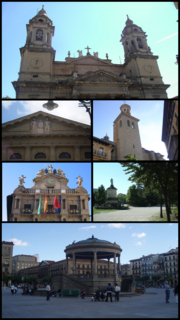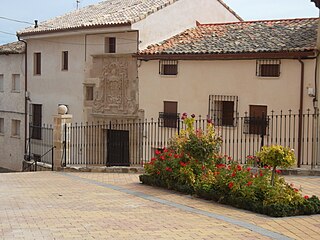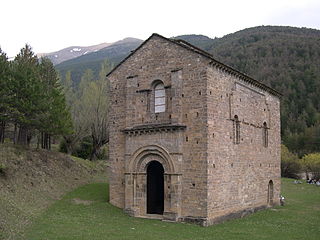This article may be expanded with text translated from the corresponding article in Spanish. (January 2013)Click [show] for important translation instructions.
|
| Cámara de los Comptos | |
|---|---|
| Native name Spanish: Cámara de los Comptos | |
 | |
| Location | Pamplona, Spain |
| Coordinates | 42°49′03″N1°38′45″W / 42.817471°N 1.645731°W Coordinates: 42°49′03″N1°38′45″W / 42.817471°N 1.645731°W |
| Official name: Cámara de los Comptos | |
| Type | Non-movable |
| Criteria | Monument |
| Designated | 1868 |
| Reference no. | RI-51-0000008 |
The Cámara de los Comptos (Spanish: Cámara de los Comptos) is a building located in Pamplona, Spain. It was declared Bien de Interés Cultural in 1868.[ citation needed ]

Spanish or Castilian is a Western Romance language that originated in the Castile region of Spain and today has hundreds of millions of native speakers in the Americas and Spain. It is a global language and the world's second-most spoken native language, after Mandarin Chinese.

Pamplona or Iruña is the capital city of the Autonomous Community of Navarre, in Spain, and historically also of the former Kingdom of Navarre. Pamplona is also the second largest city in the greater Basque cultural region, composed of two Spanish autonomous communities, Navarre and Basque Country, and the French Basque Country.

Spain, officially the Kingdom of Spain, is a country mostly located in Europe. Its continental European territory is situated on the Iberian Peninsula. Its territory also includes two archipelagoes: the Canary Islands off the coast of Africa, and the Balearic Islands in the Mediterranean Sea. The African enclaves of Ceuta, Melilla, and Peñón de Vélez de la Gomera make Spain the only European country to have a physical border with an African country (Morocco). Several small islands in the Alboran Sea are also part of Spanish territory. The country's mainland is bordered to the south and east by the Mediterranean Sea except for a small land boundary with Gibraltar; to the north and northeast by France, Andorra, and the Bay of Biscay; and to the west and northwest by Portugal and the Atlantic Ocean.













